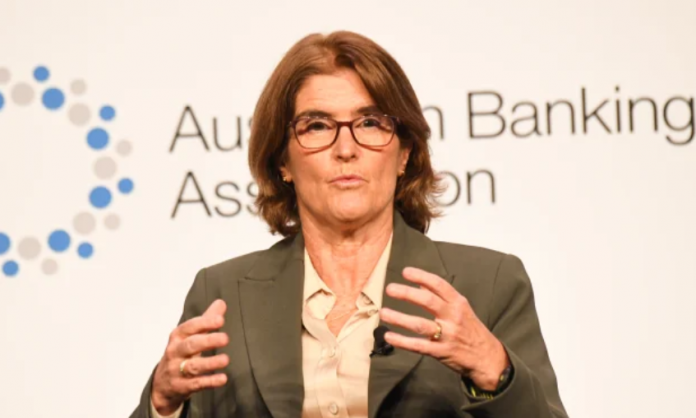The announcement on 13 July that Deputy Governor Michele Bullock will replace current Reserve Bank of Australia (RBA) Governor Philip Lowe was welcomed by many. Treasurer Jim Chalmers hailed the appointment of Bullock—who will be the first woman to head the bank—as “history-making”. ACTU leader Sally McManus greeted it as a chance to “consider the realities of the Australian economy with fresh eyes”.
Undoubtedly, many are relieved to see the back of Lowe, who has made a name for himself as a cold-hearted warrior for the Australian ruling class. In just over a year, Lowe raised interest rates twelve times, sending mortgage repayments through the roof and helping to drive the worst cost-of-living crisis in a generation.
In recent media appearances, Lowe was unapologetic about wanting workers and the poor to bear the burden of controlling inflation, despite evidence from the OECD and others that big business profits are most responsible for rising prices. He made clear at every available opportunity whose side he was on. At a banking conference in June, he commented: “We will get ourselves into trouble if we accept the premise that all workers need to be compensated for inflation”. Asked about mortgage holders struggling with rate rises, he suggested that instead of wage increases, “if people can cut back spending or in some cases find additional hours of work, that would put them back into a positive cash flow position”.
Speaking at a meeting of the Senate estimates committee in May, Lowe also had some advice for renters. In the face of rapidly rising rents, he suggested, people could simply live at home longer or “get a flatmate”. “We need more people on average to live in each dwelling”, he said. Lowe himself takes home an annual salary of more than $1 million and lives in a multi-million dollar five-bedroom house in Sydney’s leafy eastern suburbs, which he purchased in 1997 with help from a heavily discounted, taxpayer-subsidised loan. No flatmates for him!
Lowe’s increasingly Mr Burns-like public persona was becoming a political liability for Labor. So, despite his (understandable) popularity with the top end of town, he has been shown the door. How much in the way of “fresh eyes”, though, can we expect from Michelle Bullock when she starts her term in September? The short answer is none.
Bullock is as establishment as it comes. She has worked at the bank for almost four decades, starting in 1984 and gradually moving up the ranks. She was made assistant governor in 2010 and was promoted to deputy governor (second in the chain of command, immediately under Lowe) last year. Bullock has been privy to every decision made under Lowe’s governorship and has given no indication of opposing any of the recent interest rate rises.
Bullock has been in lockstep with Lowe on unemployment too. In a speech to the Australian Industry Group in June, she said that “employment is above what we would consider to be consistent with our inflation target”. She endorsed a rise in unemployment to 4.5 percent—equivalent to the loss of around 140,000 jobs—to get inflation under control. Suffice it to say, the topic of how those 140,000 people would survive on welfare rates well below the poverty line and still make their rent or mortgage payments didn’t come up. An understandable blind spot, perhaps, for someone with a property portfolio worth an estimated $6 million.
Other bankers and economists, including Lowe himself, have widely praised Bullock’s appointment. Warren Hogan, chief economist at Judo Bank, told the Guardian that Bullock is “experienced and battle-hardened” and that she “knows exactly what it takes to make good monetary policy”.
The term “battle-hardened” is often used as a slogan by the CFMEU, denoting the construction union’s experience fighting for its working-class members. When applied by an economist to the likes of Bullock, it means much the same, but from the opposite direction: that she can be trusted to continue the RBA’s fight for big business and the rich. Bullock’s “experience and expertise”, touted by Jim Chalmers in an interview with the Conversation, will be used to make decisions in line with what’s best for ruling-class profit-making.
There’s no “good” pick for RBA governor. The bank isn’t an institution designed to ensure the well-being of ordinary people. It has always been and will continue to be under Bullock, part of the system of undemocratic-by-design economic “checks and balances” that maintain the smooth functioning of capitalism in the interests of those at the top.
The Labor Party has made it clear that it has no intention of changing this. It has given “in-principle” support to removing the treasurer’s power to overrule RBA decisions—one of the key recommendations of the government’s review of the bank released in April. It’s convenient, after all, for the government to wash its hands of decisions about interest rates and leave it to supposedly “independent experts” like Bullock. This creates an illusion of objectivity and helps ensure the invaluable service provided by the RBA to the rich can carry on, as much as possible, outside the political spotlight.








